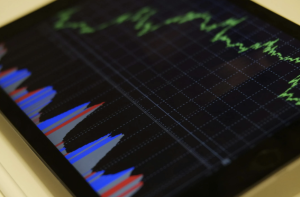Understanding the Silver Purity Before Investing

Silver in its pure form is quite soft, and hence, like gold, it is mixed with different alloys to give it more durability. Even a minute difference in purity can significantly impact the overall value of the silver product that you may be planning to buy.
So, it is essential to comprehend the different figures used for measuring silver purity.
Measuring the Purity of Silver
The purity of silver bars or coins available on websites like https://www.indigopreciousmetals.com/ is known as millesimal fineness. It measures the overall purity based on parts per thousand. Just like gold, silver is also measured using millesimal fineness, with its purest form measuring 0.999.
When you are investing in silver, you may have come across terms like Brittania Silver or Sterling Silver. Such hallmarks are a direct reference to silver’s purity, and you can find it stamped on the metal you buy.
Both Sterling Silver and Britannia Silver are faintly less pure compared to fine silver. Sterling Silver measures 92.5 on the millesimal fineness scale, while Britannia Silver measures 95.8. A few silver bars are made with Sterling Silver, just like certain antiques and collectibles.
Fine Silver
The millesimal fineness scale, the system for grading the purity of the silver, is expressed in decimals. If you are planning to invest your money in silver, remember that any silver used for trade or investment in commodities and metal exchanges should be 99.9 percent pure or .999, also known as “three nines five.”
Any investment grade fine silver will be stamped with a hallmark certifying its purity. For instance, Sterling Silver which is used for jewellery, has a purity of 92.5 percent. So, if you check the jewellery the number 925 will be stamped on it, indicating the purity.
The silver coins, which are minted for general circulation, usually use silver with a purity mark ranging between eighty and ninety percent. For bullion coins and silver bullion, only fine silver is used. Those silver that is stamped with 0.999 purity, are the ones that have good value in the trade market.
Products Made With Fine Silver
As fine silver is considered too soft for commercial, industrial, and jewellery use, it is primarily set aside for investment products. Some of the most common silver bullion types are coins, bars, or ingots.
The standard sizes for bars are one, five, ten, and hundred ounces. Rounds or silver bullion coins are sought after by many for investment purposes. Some of the world’s large mints have one signature silver coin. For instance, the Perth Mint of Australia has a famous Silver Kangaroo; the Royal Mint in London has silver Brittania.
Check the Silver Purity before Investing
Though you may buy silver coins and bars from any source, it is essential to check whether they are reliable and trustworthy. Primarily when investing in silver bars, make sure that you get them from reputed sources.
Don’t ever purchase silver from unknown traders, as you will have difficulty determining the bars’ purity on your own.
With silver’s value always on the top, many people believe that investing in silver is far superior to other precious metals. With the stakes consistently high, make sure that you buy the silver from reliable sellers to get good returns in the investments.





